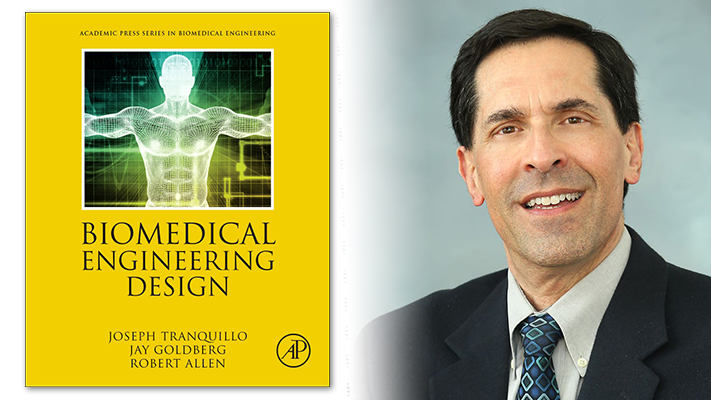By Dr. Jay Goldberg, professor of practice in biomedical engineering, Opus College of Engineering

“Biomedical Engineering Design” presents the design processes and practices used in academic and industry medical device design projects. The first two chapters are an overview of the design process, project management and working on technical teams. Further chapters follow the general order of a design sequence in biomedical engineering, from problem identification to validation and verification testing. The first seven chapters, or parts of them, can be used for first-year and sophomore design classes. The next six chapters are primarily for upper-level students and include in-depth discussions of detailed design, testing, standards, regulatory requirements and ethics. The last two chapters summarize the various activities that industry engineers might be involved in to commercialize a medical device.
Learn more or purchase this book at Academic Press
Dr. Jay Goldberg answered some questions about his new book, including his favorite part of the writing process, the origins of the idea for “Biomedical Engineering Design” and how it complements his academic career.
This textbook presents the design processes and practices used in academic and industry medical device design projects and is intended to be used in undergraduate and graduate courses involving medical device design.
My favorite part of the writing and editing process was the collaboration with my two coauthors. Although we each have different experiences in teaching design courses and possess different opinions on various topics, we respected each others’ viewpoints. We all learned much from each other, learned to consider each others’ points of view, and realized the value in different approaches. We each had our areas of expertise and we valued each others’ contributions to the book.
A meeting of the Kern Engineering Entrepreneurship Network (KEEN) in Waukesha, Wisconsin. Two of the authors decided that there was a need for a new book on medical device design and related design processes.
This will be my third book. The two other books are: “Capstone Design Courses: Preparing Biomedical Engineers for the Real World” (Morgan and Claypool Publishers, 2012) and “Capstone Design Courses: Producing Industry-Ready Biomedical Engineers” (Morgan and Claypool Publishers, 2007).
We hope to prepare students for careers involving the design of medical devices by presenting aspects of the medical device design process that apply not only to student design projects, but also to industry design projects. Our goal is to address the gaps in existing textbooks and prepare students for professional practice.
As the instructor for the senior capstone design course for biomedical engineering students here at Marquette, this will help me focus on the unique aspects of the medical device design process. It presents topics specific to the design of medical devices that are not addressed in more generic design textbooks.
If you have recently published a book, or if you have one coming out, we would like to feature your publication in an upcoming Marquette Bookshelf feature. More information on the submission process is available online.
Book Details
- Publisher : Academic Press; 1st edition (June 7, 2022)
- Language : English
- Paperback : 528 pages
- ISBN-10 : 0128164441
- ISBN-13 : 978-0128164440


